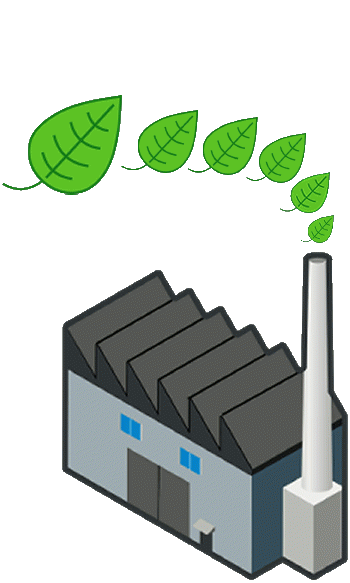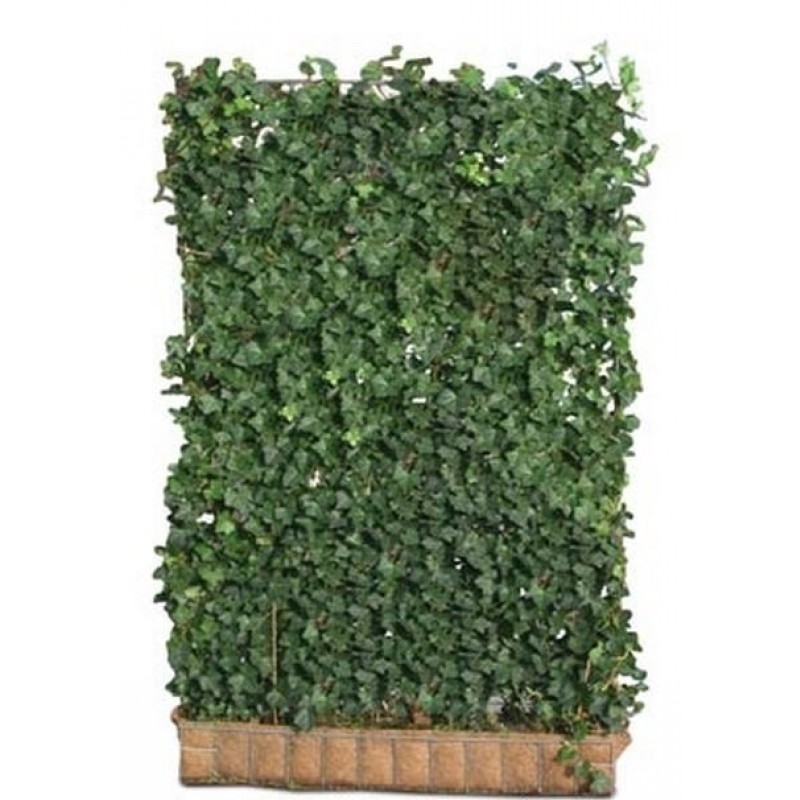Nice idea but can biomass REALLY do this?
Well, yes.
According to a 2012 study by The University of Applied Sciences in Dresden using Hedera helix 'Woerner' (shown right) as the hydroponically-grown test plant, "nearly 2.4 kg of carbon dioxide is bound and 1.7 kg of oxygen is released per square metre of hedge area and per year." The same study concludes "One square meter of the element area 'Hedges by the Metre' requires 1012 kg of water per year..." BUT "Only 0.76 per cent of the water remains in the plant." - the rest transpires so is easily recoverable.
Biomass uptake of CO2 is proven, but to absorb CO2 anywhere near as fast as we need we must grow MUCH more biomass, MUCH faster.
Here's how.
FIRST, higher CO2 levels increase biomass CO2 uptake so since CarbonGood can optimize CO2 levels for maximum effect, the process should yield 30-40% improvement in CO2 uptake. That's also 30-40% faster biomass when used with an emitter.
SECOND, this LED lighting boosts growing speed 50%.
THIRD, hydroponics eliminates weed and pest damage - a key factor in yield loss - by excluding them. That means no dangerous chemicals - and a further 30-40% output boost.
FOURTH, it's immune to weather which in the West cuts agricultural yield by 20% - we get that back too.
FIFTH, it has no seasons and (almost) no night - unike most agriculture, it's virtually 24/7/365. That gives us 30%+ more growing time on average.
Adding all this together we have (1.3 x 1.5 x 1.3 x 1.2 x 1.3), we're getting around 4x more product per unit area than open field agriculture.
BUT - you can also STACK CarbonGood . CarbonGoodPro will stack up to 9 units, EACH of which is itself multi-tier.
So an example 4-high stack, each with 4 planted tiers, can potentially grow biomass - AND lock-up CO2 - 4 x 4 x 4 = 64X more efficiently than open field agriculture per unit area.
ALSO: as nutrient is delivered just where it's needed, in just the right amount, there's no mass spraying that wastes 90% of the chemicals - so there's no run-off pollution, which means less toxic algal bloom in our seas and lakes, protecting marine species and securing another food source.
Hold on - what if you're short of water?
Growing stuff takes water. Lots of water. So CarbonGood may look unworkable in drier areas. It isn't.
Because in conventional agriculture, most water applied (99.24% in the above Hedera helix example) is wasted - it transpires straight to atmosphere so you need to get more. But CarbonGood is closed circuit, meaning transpired water is condensed out and re-used.
But
where do we get the water from to start with? We know burning hydrocarbons - like natural gas - releases lots of CO2 - but it
also releases lots of
water.
Here's the equation for burning methane (essentially, natural gas):
CH4 |
+ |
2 O2 |
= |
CO2 |
+ |
2 H2O |
And here's the one for burning wood:
C6H12O6 + 6 O2 = 6 CO2 + 6 H2O
You get as much water as you do CO2. All the water we need is right there.
BUT THAT'S NOT ALL. CarbonGood is virtually closed-circuit, so once it has the water it needs only minimal addition is required.
But we can still capture more of the water from the emissions - so (once cleaned-up) THAT water is available for human or other use. Cool.
There's another reason to reduce water vapour emission.
Science identifies water vapor as magnifying global warming - so recovering this water stops it going to atmosphere. It's not much, but nice to have - especially as we've already put water recovery in place.
Now, you're probably thinking: Even if you're right, it's much too big to actually happen. Isn't it?
We don't think so. Unlike conventional CCS, and many other carbon capture solutions, which need technically-complex facilities, high investment, and take years to build and commission at scale, CarbonGood isn't actually "big" - it's just boxes and some ancillary stuff.
We can MAKE it big - it's modular so we can put lots together, but fundamentally CarbonGood is a very compact, low-cost and simple thing. And that means it's inherently achievable.
ALL of the tech employed not only already exists, but most is available off-the-shelf. We think we really do have a quick, cheap, flexible, safe, go-anywhere and scalable solution that we can start doing at large scale in just a few years.

